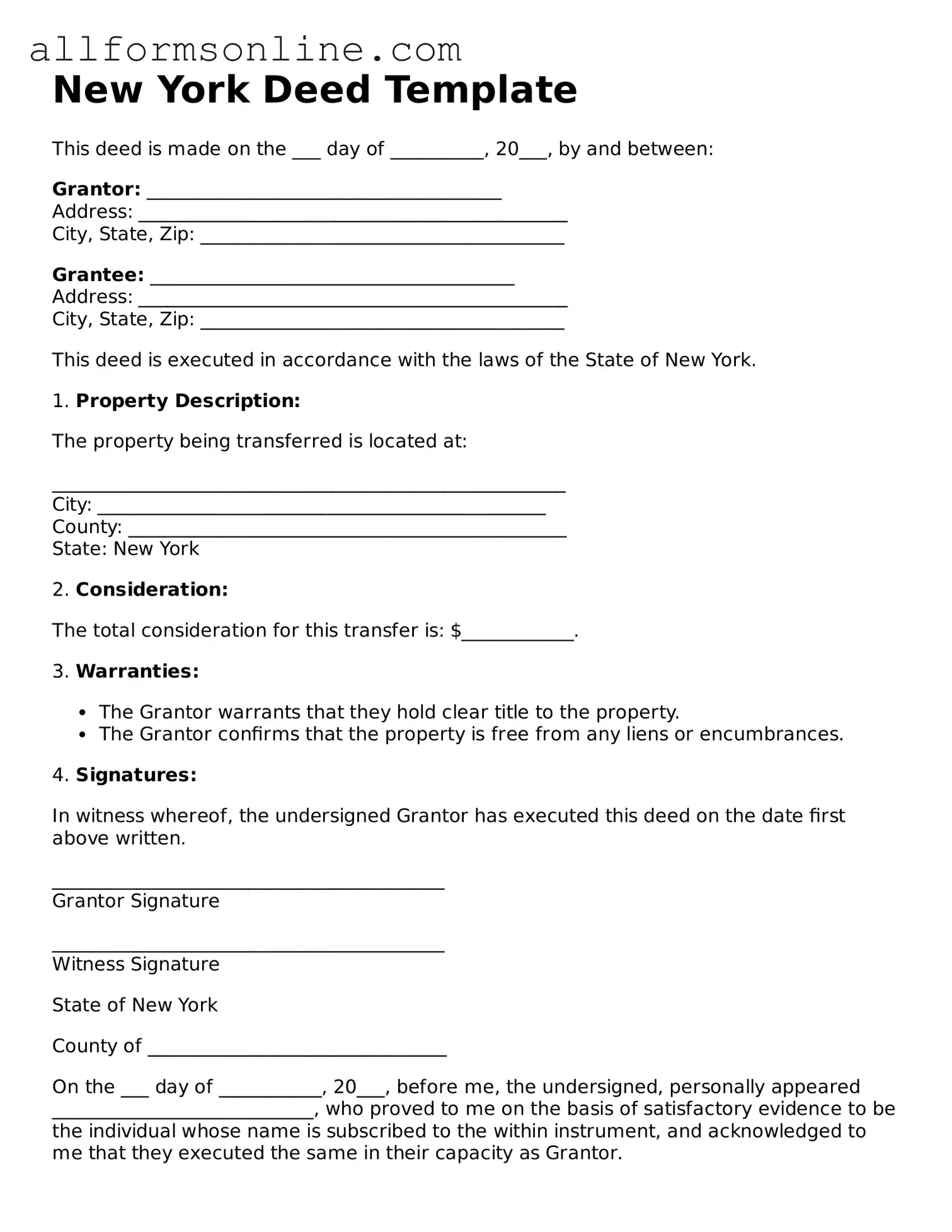What is a New York Deed form?
A New York Deed form is a legal document used to transfer ownership of real property in New York State. It serves as proof of the transfer and outlines the details of the transaction, including the names of the parties involved, a description of the property, and any conditions or restrictions related to the transfer.
What types of deeds are available in New York?
New York offers several types of deeds, including the Warranty Deed, Quitclaim Deed, and Bargain and Sale Deed. A Warranty Deed provides the highest level of protection for the buyer, ensuring that the seller holds clear title to the property. A Quitclaim Deed transfers whatever interest the seller has in the property without guaranteeing that the title is clear. A Bargain and Sale Deed implies that the seller has the right to sell the property but does not guarantee a clear title.
How do I fill out a New York Deed form?
To fill out a New York Deed form, start by clearly identifying the parties involved. Include the full names and addresses of the grantor (seller) and grantee (buyer). Next, provide a detailed description of the property, including its address and any relevant tax identification numbers. Finally, sign the form in front of a notary public to ensure its validity. Make sure to check for any additional requirements specific to your county.
Do I need to record the Deed after it is signed?
Yes, it is essential to record the Deed with the county clerk's office where the property is located. Recording the Deed protects your ownership rights and provides public notice of the transfer. This step is crucial for establishing legal ownership and can prevent future disputes over the property.
What fees are associated with filing a New York Deed?
When filing a New York Deed, you may incur several fees, including recording fees charged by the county clerk's office. These fees vary by county and are typically based on the number of pages in the Deed. Additionally, if applicable, you may need to pay transfer taxes, which are calculated based on the sale price of the property. Always check with your local office for the most accurate fee schedule.
Can I use a New York Deed form for any type of property?
Generally, a New York Deed form can be used for most types of real property, including residential, commercial, and vacant land. However, certain properties, such as those held in a trust or subject to specific regulations, may require special forms or additional documentation. It’s advisable to consult with a legal professional if you have questions about your specific situation.
